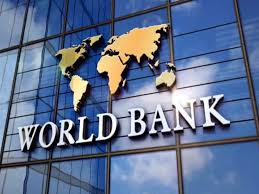WASHINGTON – The World Bank Group has launched the first in a series of new core diagnostic reports that integrate climate change and development considerations and help countries prioritize the most impactful actions that can reduce greenhouse gas (GHG) emissions and boost adaptation.
The Country Climate and Development Reports (CCDRs) build on rigorous data and research and identify main sources of GHG emissions and climate vulnerabilities. They discuss development paths that reduce GHG emissions and boost climate adaptation, including the costs and challenges as well as benefits and opportunities. The reports also suggest concrete, priority actions that can support the transition towards climate resilience and lower emissions.
As public documents, CCDRs are aimed at informing governments, citizens, and development partners to engage with the development and climate agenda. CCDRs will feed into other core Bank Group diagnostics and help attract funding and direct financing for high-impact climate action.
“As the largest multilateral funder of climate action in developing countries, we recognize the importance of good data and diagnostics that identify and prioritize actions that meaningfully reduce GHG emissions and build resilience,” said World Bank Group President David Malpass. “These reports offer concrete ideas of high-impact climate actions that support development and also explore opportunities and reforms to enable private sector engagement in the transition.”
The Türkiye CCDR released this week identifies key priorities for climate action to help Türkiye reduce GHG emissions and boost resilience, including:
Reducing the carbon intensity of the energy sector and transitioning away from coal in a just and inclusive manner, while supporting well-designed power markets and a well-functioning grid;
Enabling public investments and mobilizing private investments through a tax reform that combines subsidy reform with a carbon tax, along with other structural interventions that better align incentives to increase productivity and growth and reduce carbon intensity;
Reducing energy inefficiency and supporting modal shift in transport;
Sustainable forest management and landscape restoration;
Mainstreaming resilience considerations in public and private sector decisions; and
Enabling a people-centered approach to the green transition, providing well-targeted support to communities impacted by physical and transition risks.
Over the next few months, the World Bank Group expects to publish more than 20 CCDRs. An overview document summarizing the key emerging priorities arising from these diagnostics will be published ahead of COP27 to foster action-oriented discussion in the global community.
The World Bank Group delivered over $26 billion of climate finance in fiscal year 2021 alone. That number is set to rise further this year. The Bank Group remains committed to aligning its financing flows with the Paris Agreement.


Comments are closed.